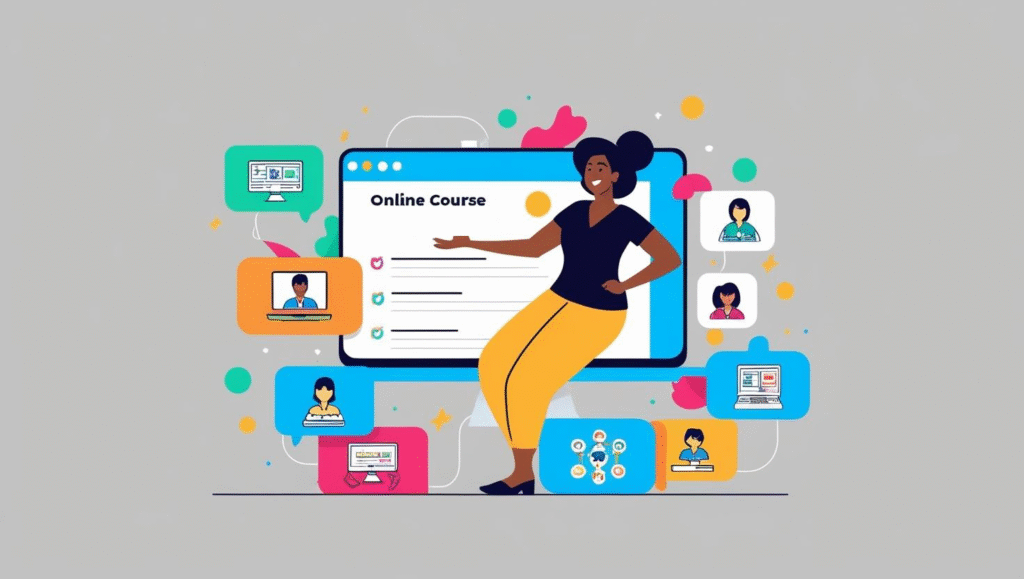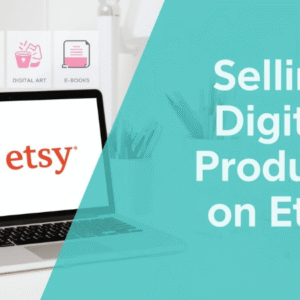Launching an online course can seem daunting. There are many moving parts, from planning content to choosing the right platform. When done right, an online course lets you share your expertise, connect with learners worldwide, and generate a steady income.
If you have a passion for teaching and a topic you’re excited about, an online course might be just the thing for you. However, the process involves careful planning, creative course design, and smart marketing. In this guide, you will learn step-by-step how to launch an online course that meets the needs of your students and helps build your reputation as an educator.
Turn Your Passion into Earnings
Get the Tools, Training and Support you need. All in One Place
Join a a Vibrant and Global Community of
Marketers and Entrepreneurs from Around the World
Step 1: Define Your Course Topic and Goals
Before you jump into creating content, you need to identify your course topic and set clear goals. The topic should reflect your expertise and capture the interest of potential learners. Outlining these streamlines your planning process.
Key Questions to Consider:
- What specific knowledge or skill do I want to share?
- Who is my target audience and what challenges do they face?
- What primary outcomes should my students achieve?
- How will this course stand out from similar content online?
Example Goals for Your Course:
- Establish yourself as an authority in your niche.
- Create a curriculum that leads to tangible improvements.
- Build a community of motivated learners.
- Generate a reliable income stream.
Clarifying these points at the start paves the way for a focused and effective course launch.
Step 2: Validate Your Course Idea
Before you commit time and resources to building your course, make sure your idea resonates with potential students. Validation helps reduce the risk of investing in a concept that might not attract interest.
Steps to Validate Your Idea:
- Research similar courses to see what’s already available.
- Ask your target audience on forums, social media, or through surveys.
- Offer a free webinar or downloadable guide to gauge interest.
- Collect feedback on your proposed course outline and structure.
Pro Tip:
Start small with a pilot version. A shorter or mini-course can give you valuable insights and feedback to refine a more robust offering later on.
Step 3: Develop an All-in-One Curriculum
Once your idea is validated, it’s time to structure your course content. A well-organized curriculum ensures that your students follow a logical learning path from start to finish. You benefit from a clear roadmap of lessons, modules, and assessments.
Building Your Curriculum:
- Outline Key Modules: Divide your subject into coherent modules that build upon one another.
- Create Lesson Plans: Break each module into smaller lessons including video content, readings, quizzes, or assignments.
- Include Assessments: Integrate quizzes or projects to help students gauge their progress.
- Plan Supporting Materials: Think about worksheets, slides, downloadable guides, or extra resources that give a boost to learning.
Example:
If your course is about digital marketing, you might begin with an introduction to marketing principles, then move on to social media strategies, content creation, and finish with analytics and reporting.
Step 4: Choose the Right Technology Platform
Selecting a platform is a critical step because it affects how you deliver your course and interact with students. There are many options available, each with unique features and costs. Choose one that fits your needs and budget.
Factors to Consider:
- User Experience: Make sure the platform offers an intuitive interface for both you and your learners.
- Features: Look for video hosting, quizzes, discussion forums, and progress tracking.
- Scalability: Consider whether the platform can support future course updates or additional courses.
- Payment Integration: Check that it allows for easy enrollment and handles transactions securely.
Pro Tip:
Test a few platforms with trial accounts to see how well they fit your teaching style and technical comfort level.

Step 5: Market Your Online Course Effectively
Creating an outstanding course is only half the battle. You need to let potential students know your course exists. A clear marketing strategy attracts the right learners.
Marketing Your Course:
- Build an Email List: Start collecting emails from interested prospects early on.
- Use Social Media: Share teasers, behind-the-scenes looks, and helpful tips related to your topic.
- Offer Early-Bird Discounts: Incentivize early sign-ups with special pricing.
- Create a Sales Page: Develop an informative landing page that outlines the benefits of your course.
Example:
Set up a simple website or landing page where interested learners can sign up for updates. Free webinars or sample lessons can help draw people in.
Step 6: Launch Your Course and Get Involved with Your Students
The launch phase is exciting. This is when your planning becomes reality. A smooth launch sets the tone for your course and builds momentum among early adopters.
Launch Strategies to Consider:
- Be Transparent: Clearly communicate with your audience about what to expect when the course goes live.
- Create a Launch Event: Host a virtual event or live Q&A session to generate excitement and answer questions in real time.
- Provide Support: Offer clear channels for students to ask questions or share feedback, building trust and quickly resolving issues.
- Monitor Engagement: Use analytics and feedback to make adjustments as needed during the launch period.
Pro Tip:
Keep your initial group small to focus on delivering quality content and gathering valuable feedback that can refine your course for future students.
Step 7: Refine and Scale Your Course
After your course is live, continuous improvement becomes important. Use feedback from your students to fix issues, update content, and adjust your teaching methods.
Improving Your Course:
- Collect Reviews and Feedback: Use surveys or informal check-ins to learn what works and what needs improvement.
- Update Content Regularly: As your industry evolves, keep your course materials current.
- Consider Adding Bonuses: Offer extra resources or advanced modules as your course gains traction.
- Explore Partnerships: Team up with other educators or influencers to extend your reach and boost credibility.
Scaling your course might also involve offering advanced versions, membership subscriptions, or bundling multiple courses. These steps help you stay competitive and serve a growing audience.
Looking for a training platform that actually works?
I’ve put together a full walkthrough of the affiliate marketing training that helped me build everything I have today. It’s practical, beginner-friendly, and you can try it out for free to see if it suits you.
Take a look at my honest review and see if it’s the right fit for you.
Common Questions and Troubleshooting
How much time does it take to create an online course?
The timeline depends on your course scope and existing content. A simple course might take a few weeks, whereas a super detailed course can take several months of planning and production.
What if I’m not comfortable on camera?
- You can use screen recordings, slideshows, or voice-over presentations.
- Consider hiring a professional to help with production if needed.
- Focus on clear audio quality and engaging visuals to support your lessons.
How do I handle technical issues during the course launch?
- Have a dedicated support channel for immediate help.
- Prepare a detailed FAQ and troubleshooting guide for common issues.
- Consider a soft launch with a limited user group to catch bugs before full rollout.
Final Thoughts and Next Steps
A successful online course launch is the result of careful planning, strategic marketing, and ongoing improvements. By following these steps, you position yourself to share your knowledge and connect with eager learners. Your course can generate income and build a loyal community of students who value your expertise.
Your Action Plan:
- Define your course topic and the benefits it offers your students.
- Validate your idea with prospective students and early feedback.
- Create an organized and engaging curriculum that breaks complex topics into manageable pieces.
- Select a user-friendly platform that fits your technical needs.
- Develop a marketing strategy that reaches your target audience effectively.
- Launch your course with support channels in place for feedback and troubleshooting.
- Continuously refine your course content based on student input and industry trends.
Consider one new element to introduce in your course launch. Each step brings you closer to creating a resource that benefits you and your students.
Let’s make it happen!






